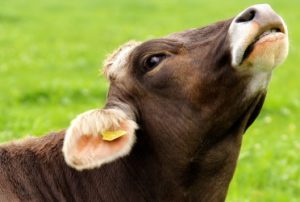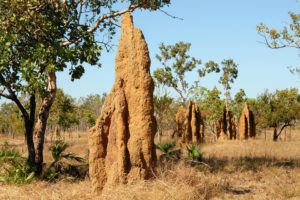

If you’ve been reading my posts, you’ll remember the post “10 reasons to question what you believe.” If you haven’t read it go ahead and do so now. It’ll be 5 minutes well spent and it’s the basis for today’s post. Because today I’m going to expand on that with a perfect example of why you should question your beliefs.
———————————————————————————
The latest media reports are telling you to believe that cows and termites are an enormous contributor to global warming. The answer to the problem appears to be 1. reduce the number of cows and 2. convert all of us into vegans. As for the termites, we should find ways to exterminate them.
Is this true? Should we believe this? Should you and I go on a broccoli and cauliflower diet with a few seeds thrown in for good measure? Should we exterminate the termites?
To help you kids answer those questions, I did some research. A heck of a lot of research in fact. Mama deserves a big sloppy kiss. Anyway, what follows is what I discovered.
Methane and carbon dioxide are serious contributors to global warming with methane being the worst offender. The trend is to blame the poor hapless cow for 20% of the methane dumped into the atmosphere and the termite for a whopping 12%.
It’s true that cows produce methane, but it’s also true that all ruminants produce methane including sheep, goats, deer, elk, bison, giraffes. wildebeests, elephants, etc.
In addition to ruminants, other animals (including us), insects, and microorganisms also produce methane as do oceans, wetlands, and fires to name a few.
I read on the website What’s Your Impact that termites are responsible for 12% of the methane in our atmosphere. The writers cited a study (1). Being the skeptic that I am, I tracked down the study and guess what. It didn’t say squat about termites contributing 12% of the methane in our atmosphere. Lie to me once, shame on you. Lie to me twice, shame on me. (I know, that’s an overused cliché’ so shoot me.)
The argument then is that the problem is with the number of cows and they are, wait for it, BIGGER. It’s true that in the United States today there are roughly 93.6 million cows compared to 44.2 million (2) in 1945, but that’s not the whole story. (It’s also true that since 1940, the world human population has grown by about 300% to 6.7 billion. That’s 300% more of us farting our methane into the atmosphere.) (3)
In the United States, there are about 16,000 wastewater treatment plants and roughly 21 million septic systems all belching out methane and carbon dioxide. (4, 5)
Overall, the process converts about 40% to 60% of the organic solids to methane (CH4) and carbon dioxide (CO2). The chemical composition of the gas is 60-65% methane, 30-35% carbon dioxide, plus small quantities of H2, N2, H2S and H2O. (6)
Now policymakers have come up with the brilliant idea to impose a carbon tax on the folks who raise cattle. Of course, any such tax will trickle down to us meat eaters. As for the termites, policymakers haven’t been able to figure out any way to tax the termites, so they’re considering ways to exterminate them. Isn’t that a precious idea? (7)
Despite all the press to try and influence our opinions on the global warming issues, there are the voices of reason out there. Policy makers are running around with their hair on fire about cows and termites. Instead, maybe they should question their beliefs and listen to these voices.
For instance, in the article “Why Cattle-Driven Global Warming Is A Load Of Bull”, Patrick Lockerby points to a glaring fact in his conclusion “Any theorist wishing to show that animal farming makes a significant contribution to global warming must explain why the trend in global warming does not commence with the rise of industrial scale farming.” (8)
Alan Broughton, a biological agriculture researcher and teacher at Strathfieldsaye Estate, makes a compelling argument that the cows are not the problem, but it is the way they are raised. In the article, “Ruminants and methane: Not the fault of the animals” he writes:
“Methane emissions from wild ruminants was never a problem because nature does not permit waste – the methane was used as food for methanotrophic bacteria in the soil and neutralized. It was never a problem until agricultural practices started destroying the methanotrophic bacteria, which are very sensitive to chemical fertilisers and herbicides. These bacteria reactivate in biologically managed soil.” (9)
So, what is the point of all this information I’ve dumped on you kids today? It’s this: Policies are born out of the beliefs held by legislators and public opinion. If we accept what the media feeds us without question, we will end up with flawed policies.
The take away:
- Question all your beliefs.
- Examine both sides of an argument before forming an opinion.
- When your friends and relatives share their beliefs, they may or may not be true depending on where they sourced their information.
- Remember, one or two studies do not produce conclusive evidence of anything.
- Most complex problems don’t have simple answers
- Watch for the grey zones in determining what is right and wrong
One Final note: If you enjoyed this article, join the family and be sure and leave a comment below.
References:
- http://aramis.obspm.fr/~prigent/2006_Nature_Bousquet.pdf
- http://usda.mannlib.cornell.edu/usda/AgCensusImages/1945/02/07/1203/Table-17.pdf
- http://popularlogistics.com/2009/10/population-growth-1939-to-2009/
- http://usda.mannlib.cornell.edu/usda/current/USCatSup/USCatSup-06-24-2016.pdf
- http://www.circleofblue.org/2015/world/infographic-americas-septic-systems/
- https://engineering.dartmouth.edu/~d30345d/courses/engs37/anaerobicdigestion.pdf
- https://abcnews.go.com/Technology/story?id=7903722&page=1
- http://www.science20.com/chatter_box/why_cattledriven_global_warming_load_bull-66094
- https://www.greenleft.org.au/content/ruminants-and-methane-not-fault-animals




